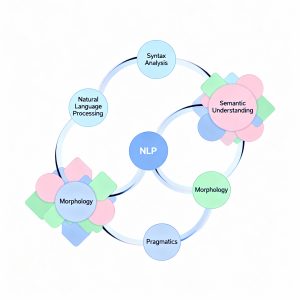Servers are the backbone of the modern digital world, powering everything from social media posts to streaming services. Whether uploading a photo on New Year’s Eve or watching a movie online, millions of requests flow through servers every second. But what really happens behind the scenes when a user interacts with an app or website? Understanding how servers work reveals the sophisticated processes and technologies that ensure speed, reliability, and security for users worldwide.
What Is a Server?
A server is a specialized computer designed to provide services, manage data, and handle requests from other computers, known as clients, over a network. Unlike regular desktops, servers are optimized for high performance, reliability, and security, making them essential for businesses and cloud-based platforms.
How Servers Process Requests
When a user enters a website URL or sends a request through an app, the following steps occur:
- Request Reception: The client’s device sends a request to the server. Servers continuously listen for such requests, which can range from accessing a web page to retrieving data or files.
- Authentication: The server may verify the client’s identity to ensure proper access rights.
- Processing: The server processes the request, retrieves the necessary data from storage or databases, and prepares a response.
- Response Delivery: The server sends the requested information or confirmation back to the client, completing the transaction.
- Verification: The client verifies the response to ensure it is accurate and legitimate.
Servers are equipped to manage multiple requests simultaneously, prioritize tasks, and efficiently utilize hardware resources such as CPU and memory.
Key Components of Server Architecture
Server architecture encompasses both hardware and software elements, working together to deliver high availability and optimal performance:
- Hardware Layer: Includes CPUs, memory, storage devices (HDDs/SSDs), and network interfaces. These components determine the server’s speed and reliability.
- Operating System: Manages communication between hardware and applications, handling resource allocation and security.
- Middleware: Acts as a bridge between the OS and applications, enabling data management and communication across distributed systems.
- Application Layer: Hosts web servers, databases, and other services that deliver content or functionality to clients.
- Networking Layer: Manages data transfer and connectivity, ensuring secure and efficient communication with clients.
- Security Layer: Implements firewalls, encryption, and access controls to protect data and prevent unauthorized access.
Techniques for Efficient Server Management
To handle millions of simultaneous users and maintain seamless performance, servers employ several advanced techniques:
Load Balancing
Load balancing distributes incoming requests across multiple servers, preventing any single server from becoming overwhelmed. This ensures high availability and consistent performance, especially during traffic spikes like major holidays or viral events. Load balancers can use different algorithms, such as:
- Round Robin: Requests are distributed sequentially across servers.
- Least Connections: New requests go to the server with the fewest active connections.
- IP Hash: Requests from the same user are directed to the same server for session consistency.
Modern cloud infrastructures use sophisticated load balancing algorithms to dynamically adjust to changing traffic, maximizing resource utilization and minimizing downtime.
Caching
Caching stores frequently requested data closer to users, reducing the need to repeatedly access the original source. This dramatically improves response times and decreases server load. Caching can occur at various levels:
- Private Caches: Store data locally for individual users, such as browser caches.
- Shared Caches: Store data centrally to serve multiple users, such as proxy or CDN caches.
Effective caching strategies distinguish between static content (which can be cached longer) and dynamic content (which requires frequent updates). Content Delivery Networks (CDNs) further enhance performance by serving cached data from servers geographically closer to users.
Security and Encryption
Servers act as digital gatekeepers, filtering and validating every request before it reaches backend systems. Security measures include:
- SSL/TLS Encryption: Protects data in transit, making intercepted communication unreadable to hackers.
- Network Isolation: Keeps application servers hidden from direct internet access, reducing exposure to threats.
- Firewalls and Access Controls: Restrict unauthorized access and monitor for suspicious activity.
Compression
Compression reduces the size of data sent over the network, enabling faster transmission and lower bandwidth usage. Popular methods include:
- Gzip: Widely used for general content compression.
- Brotli: Offers even greater compression efficiency, especially for web assets.
Types of Servers and Their Roles
Servers can be specialized to provide different services:
- Web Servers: Host websites and serve web pages to users.
- File Servers: Manage and store files for network access.
- Database Servers: Store and retrieve structured data for applications.
- Mail Servers: Handle email storage and delivery.
- Game Servers: Host online multiplayer environments for gaming.
Scalability, Reliability, and Monitoring
Modern server architecture is designed for scalability and high availability. Techniques such as auto-scaling automatically add or remove server instances based on demand, while redundancy and failover systems ensure continuous service even if some hardware fails.
Monitoring tools track server health, performance, and security, enabling t500_prod_administrators to respond swiftly to issues and maintain optimal operation.
Conclusion
Servers are the unseen engines powering the digital experiences people rely on daily. Through advanced architecture, load balancing, caching, and robust security, servers process countless requests efficiently and securely. As digital demands grow, server technologies continue to evolve, ensuring fast, reliable, and safe online interactions for everyone.
Read more such articles from our Newsletter here.



